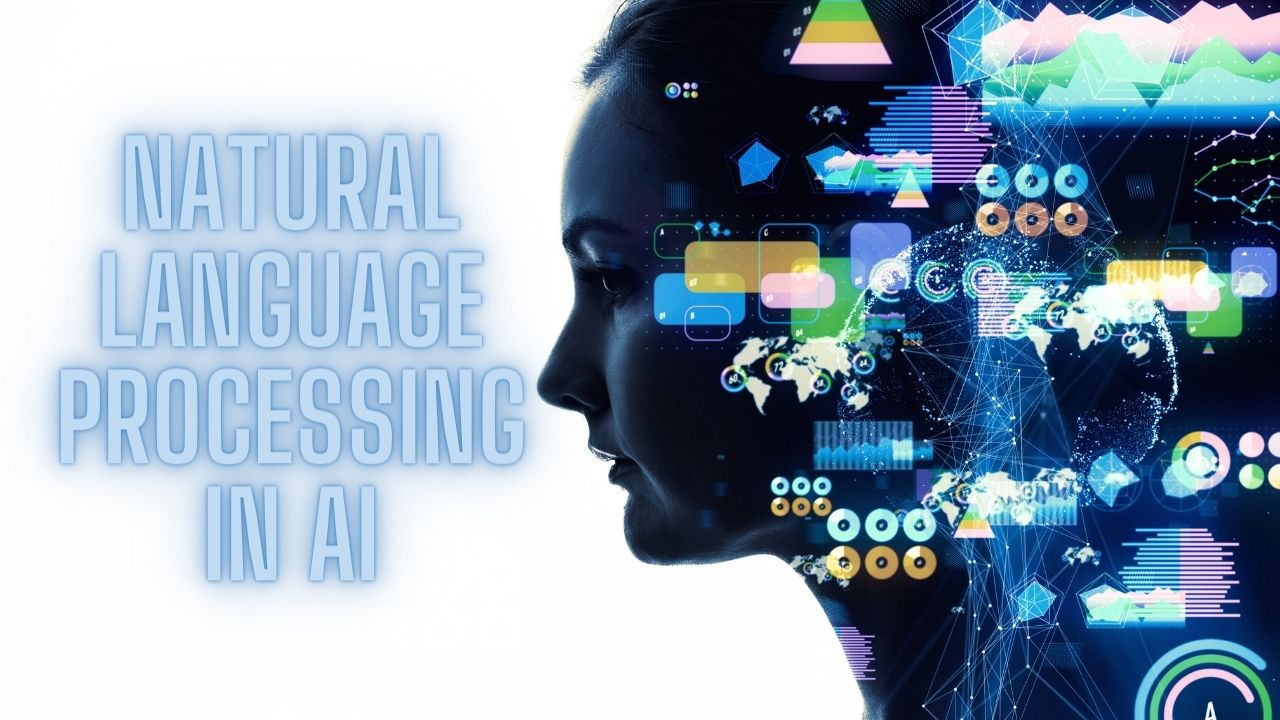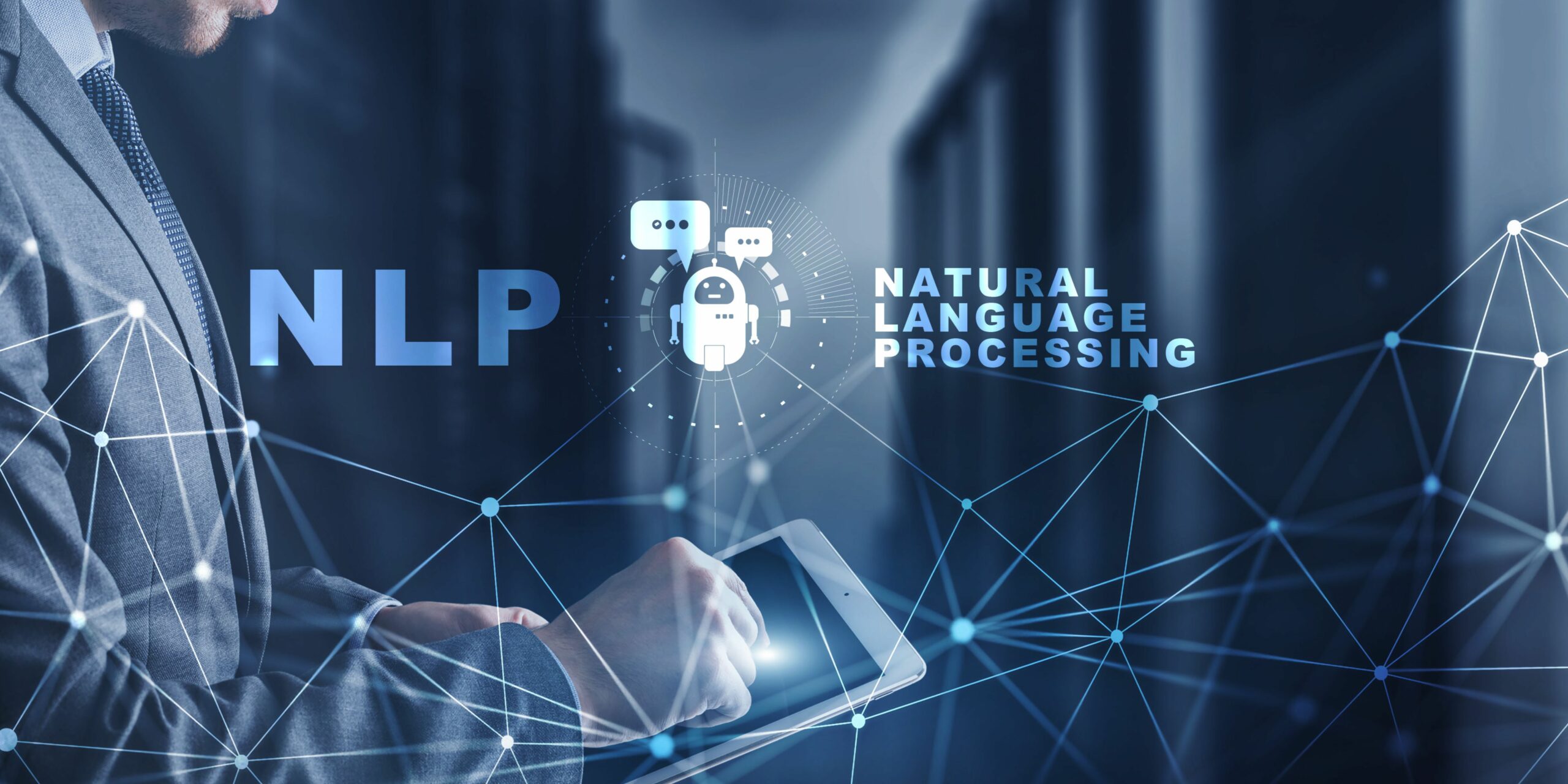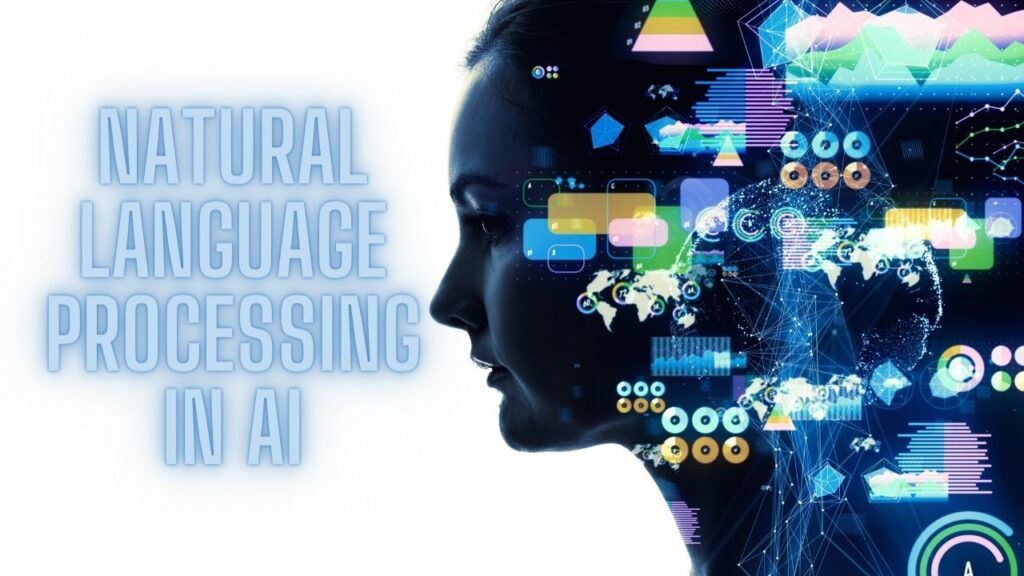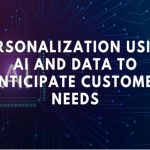 Natural Language Processing in AI (NLP) is a crucial aspect of artificial intelligence (AI) that enables machines to understand and interpret human language. With the explosion of digital data and the growth of human-machine interactions, NLP has become increasingly important in enabling computers to effectively process, analyze and respond to human language in a variety of contexts. In this article, we’ll explore why NLP is so essential to the development of AI, examine its key components, and highlight some of the exciting ways in which NLP is transforming the world around us. Whether you’re a researcher, developer, or simply interested in the cutting-edge technologies shaping our world, understanding the importance of NLP in AI is essential.
Natural Language Processing in AI (NLP) is a crucial aspect of artificial intelligence (AI) that enables machines to understand and interpret human language. With the explosion of digital data and the growth of human-machine interactions, NLP has become increasingly important in enabling computers to effectively process, analyze and respond to human language in a variety of contexts. In this article, we’ll explore why NLP is so essential to the development of AI, examine its key components, and highlight some of the exciting ways in which NLP is transforming the world around us. Whether you’re a researcher, developer, or simply interested in the cutting-edge technologies shaping our world, understanding the importance of NLP in AI is essential.
What is natural language processing?
The goal of natural language processing (NLP) is to help computers comprehend how people write and communicate. Though words and expressions of ideas through language seem fairly simple, it is much more complex. Individuals have their own distinct speaking and writing styles, which we also refer to as “tones of voice” and are continually changing to suit current usage. This is why natural language processing algorithms are much more complex and difficult to design.
Human language is full of all kinds of literary devices and differing sets of grammatical rules. Therefore, natural language processing algorithms need to find ways to understand it. As a result, there are different components of NLP that make it functional and valuable:
Components of NLP
-
Natural Language Understanding (NLU)
The first component of the NLP is natural language understanding (NLU). It uses existing information that to help these artificial intelligence algorithms comprehend and interpret human language. NLU is essential in helping these computers understand human language by using unstructured data by rearranging it in a way that can be analyzed.
-
Natural Language Generation (NLG)
On the other hand, natural language generation (NLG) is a process for constructing meaningful sentences and phrases from data sets. There are three main stages: text planning, sentence planning, and text realization. It is often present in analyzing and summarizing large amounts of numerical data. By using NLG software, it can also spot trends and present the information in a way that is simple for readers to grasp.
You might also like: A Beginner’s Guide to Deep Learning and Neural Networks
How does natural language processing work?

In order to make NLP programs accurately understand human language and mirror its patterns, we must first break down the human language into a way that these programs can understand. Language is divided into fragments so that the grammatical structure of sentences and the meaning of words may be evaluated and comprehended in context.
NLP blends statistical, machine learning, and deep learning models with computational linguistics, which is the rule-based modeling of human language. By doing this, computers can learn to read and comprehend spoken or written language in a manner similar to that of people.
Why is natural language processing important?
Natural language processing, like other fields of artificial intelligence, paves the way to make applications and tools available to the public. These tools can help in making different tasks easier to do.
Techniques and methods of natural language processing
The techniques that concern natural language processing refer to the ways that artificial intelligence extracts data from existing text to understand it. These techniques are syntactic and semantic analysis
The first technique, syntactic analysis, concerns using fundamental grammatical principles to examine a given text. This kind of analysis allows computers or software to learn sentence structure, word order, and word relationships. Syntactic analysis consist of smaller sub-tasks to accomplish this process. It creates “tokens” out of the text by using tokenization: dividing a text into smaller units of words, either as sentences or individual words. These tokens are then labeled according to their grammatical function via “part of speech tagging” (PoS tagging). Other sub-tasks include ‘stop-word removal,’ and lemmatization.
The second technique is semantic analysis. The semantic analysis focuses more on what words mean rather than how they function in a sentence or text. It defines the meaning of each word, and then it combines different terms together to examine their context-specific meanings. NLP algorithms do this by using processes such as relationship extraction to understand how different ideas interact and mean to each other. Or word sense disambiguation to figure out what a word’s meaning is based on its given context.
Difficulties in NLU
Just like other kinds of artificial intelligence or any form of technology, natural language processing, and natural language understanding has their limits. The ambiguity of language is one of the main problems with NLU. Because words may imply different things depending on the context, it can be difficult for robots to correctly interpret their meanings. An example of this issue is homonyms, which are words that can have two different meanings but the same spelling. Another hurdle for NLU is the difficulty in teaching it how to understand metaphors, idioms, or slang. Because they are reliant on using non-literal meanings.
In a greater context, NLU can be greatly limited due to how many languages and respective regional dialects there are. Language can vary greatly depending on things like dialect, regionalisms, and cultural nuances, which can be hard to decipher even for native speakers of the language.
NLP, AI, Machine Learning: What’s the Difference?
Though they are all deeply related to each other, these three terms are also different from each other.
NLP, otherwise known as Natural Language Processing, is a distinct branch of artificial intelligence that studies how computers and language interact. It trains computers and other software built to handle NLP to perceive, interpret, and produce human language.
In a similar vein, machine learning is another branch of artificial intelligence that deals with creating algorithms that let computers learn from data without explicit programming. It is primarily used to create decisions or generate predictions based on data.
Finally, artificial intelligence is the category under which NLP and machine learning fall under. At its core, artificial intelligence (AI) is the process of creating computer programs and algorithms that can imitate human intelligence. These computers are capable of performing activities that generally require human-level intellect, such as perception, reasoning, learning, and decision-making. There are also other branches or fields of artificial intelligence that are similar to machine learning and NLP but have different uses from the two.
All three of these concepts are important in developing different kinds of technology that help make human activity more accurate, efficient, and easy.
You might also like: The Future of Marketing: Harnessing the Power of AI and Machine Learning in Marketing
How Can Organizations Prepare for the Future?
All kinds of businesses, corporations, and organizations are utilizing artificial intelligence in their everyday activities. However, there are some organizations that continue to use outdated or old-fashioned methods. Even though the world continues to rapidly change. Modern-day organizations should be able to be open to adjusting to changing technology, markets, and customer tastes, in order to remain competitive. Here are four ways how:
1. Identify your text data assets and determine how the latest techniques can be leveraged to add value for your firm.
Businesses that constantly deal with text data can use NLP platforms. Any and all forms of written text that are integral to the way an organization operates. Text data is undoubtedly important for customer experience management and understanding the voice of the consumer. This is why it is important to consider new and innovative ways to elevate press releases or documents that the public will see. It’s also a way for corporations to better organize all of their contracts, reports, and even meeting conversations.
2. Understand how you might leverage AI-based language technologies to make better decisions or reorganize your skilled labor.
The nature of many positions in businesses will change as a result of AI. And these new technologies will go beyond traditional business intelligence. However, it is always important to remember that AI tools and programs will only be able to enhance human labor and efforts within businesses–not replace them.
Businesses need to start understanding how these AI technologies may be be of help to restructure one’s skilled labor. It has the capacity to automate many activities. Even those that involve making decisions, and eventually empower employees to make better data-informed decisions.
3. Begin incorporating new language-based AI tools for a variety of tasks to better understand their capabilities.
There are many available tools that are based on natural language processing. But some businesses and organizations may find them too daunting to be valuable. There is some truth to that concern. Although there is a lot of room for improvement in these apps, they are still useful. They can also provide some idea on how these tools and artificial intelligence as a whole will progress in the future.
4. Do not underestimate the transformative potential of AI.
Regardless if you are on board with the idea of adapting AI tools to your organization or not, what’s undeniable is how AI can impact all kinds of industries. Companies should start laying the groundwork now not just to profit from transformational AI. But also to help prevent unwanted futures and guarantee that sophisticated AI is applied fairly to society.
How does natural language processing work?
We’ve already discussed the different techniques that natural language processing is built upon. However, its application goes through a much more complicated program pipeline:
- Preprocessing. This process entails “cleaning up” the text data to make it easier for the machine learning models to understand later. Examples of this are ensuring that all words and sentences are correctly spelled or are typed in lowercase.
- Model Implementation. This process concerns translating the text into a numerical language that can be understood by the computer. Once the text is entered, then the machine learning computer will be able to analyze the data.
- Application of clustering algorithm. By using a clustering algorithm, all of the tokenized and broken-down languages can be categorized according to their common characteristics with each other.
- Testing. Finally, the model can be tested for its accuracy. And also tweaked according to how well it combined together different elements from each category.
Which NLP problems are considered AI-complete?
Several NLP issues are also AI-complete. Which means they are just as challenging to solve computationally as problems involving general artificial intelligence. These issues frequently need a high level of comprehension and reasoning akin to that of a person. Necessitating the creation of extremely complex NLP algorithms.
Examples of this are answering open-ended questions because it requires understanding the language, context, and topic of the content. Or summarizing a long text while retaining all of its important information and ideas.
How is AI being used in natural language processing
AI is heavily incorporated into natural language processing (NLP) to create algorithms and methods that can decipher, comprehend, and produce human language. A great example of this is with virtual chatbots and virtual assistants such as Siri, Cortana, or Alexa. They are essentially computer applications that have the ability to decipher voice conversations, process them, and provide search results based on what the application recognized.
How to get started with NLP?
Although it might be scary to start with NLP, there are numerous tools available to assist in learning how to utilize it and apply it in different ways. First, it’s important to master and be comfortable with the different programming languages that are most commonly used to develop NLP programs. Pick a language like Python, Java, or R to start. Due to its simplicity and accessibility of potent NLP packages like NLTK, spaCy, and gensim, Python is a popular choice for NLP.
Find publically accessible datasets for NLP tasks like sentiment analysis, named entity identification, or machine translation to get expertise. For NLP datasets, try Kaggle, the UCI Machine Learning Repository, or GitHub. Finally, there are also many blog sites and guides online that outline how the process of developing and using an NLP works.
You might also like: How Artificial Intelligence Applications Are Revolutionizing Healthcare





